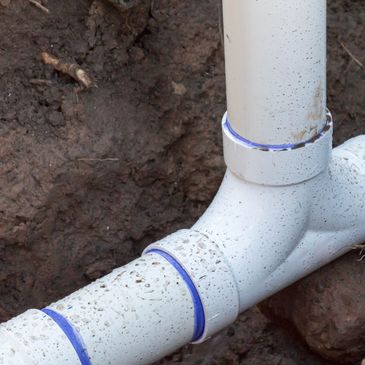Septic to Sewer Conversion

Call the County
Septic Tank Abandonment and Final Inspection
System Disconnection and Installation
Before any work starts, you’ll need to contact the local utility or public works department to verify that a sewer line is available for connection at your property. They’ll tell you where the nearest tie-in point is, what permits are required, and whether any capacity fees or tap fees apply. You’ll also need to get approval from the cou
Before any work starts, you’ll need to contact the local utility or public works department to verify that a sewer line is available for connection at your property. They’ll tell you where the nearest tie-in point is, what permits are required, and whether any capacity fees or tap fees apply. You’ll also need to get approval from the county health department to abandon the existing septic tank. Once the permits are issued, a licensed contractor can proceed with planning the tie-in.

System Disconnection and Installation
Septic Tank Abandonment and Final Inspection
System Disconnection and Installation
After permits are secured, PumpCo will disconnect your home’s plumbing from the existing septic system and install a new sewer lateral (the pipe that runs from your house to the municipal sewer main). This usually involves trenching across your yard, laying SDR-35 or Schedule 40 PVC pipe, and installing cleanouts for maintenance access.
After permits are secured, PumpCo will disconnect your home’s plumbing from the existing septic system and install a new sewer lateral (the pipe that runs from your house to the municipal sewer main). This usually involves trenching across your yard, laying SDR-35 or Schedule 40 PVC pipe, and installing cleanouts for maintenance access. If the municipal sewer main is at a higher elevation, a grinder pump or lift station may be required to move wastewater uphill to the main.

Septic Tank Abandonment and Final Inspection
Septic Tank Abandonment and Final Inspection
Septic Tank Abandonment and Final Inspection
Once the new sewer line is connected and tested, the old septic tank must be properly abandoned. That means it’s pumped out, crushed or filled with clean sand or gravel, and permanently disconnected from the home’s plumbing. The local inspector will then verify the connection, pressure test the new line, and sign off on the job. After fi
Once the new sewer line is connected and tested, the old septic tank must be properly abandoned. That means it’s pumped out, crushed or filled with clean sand or gravel, and permanently disconnected from the home’s plumbing. The local inspector will then verify the connection, pressure test the new line, and sign off on the job. After final approval, the property is officially converted to municipal sewer service.
Contact Us
Better yet, see us in person!
We love our customers, so feel free to schedule a visit during normal business hours.
Hours
Open today | 09:00 am – 05:00 pm |

This website uses cookies.
We use cookies to analyze website traffic and optimize your website experience. By accepting our use of cookies, your data will be aggregated with all other user data.
